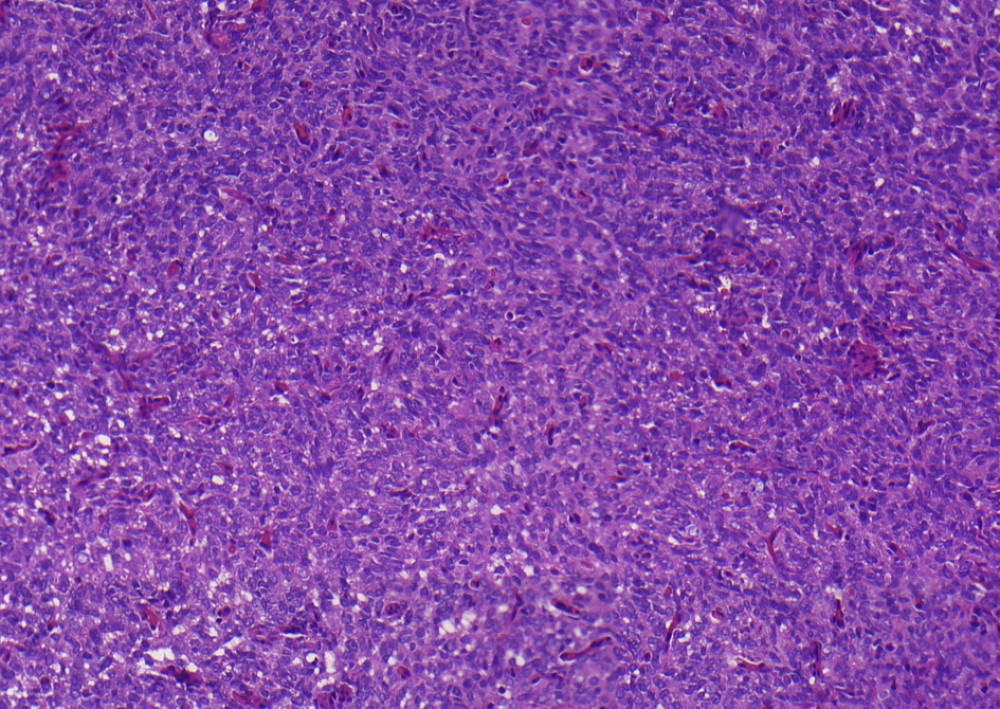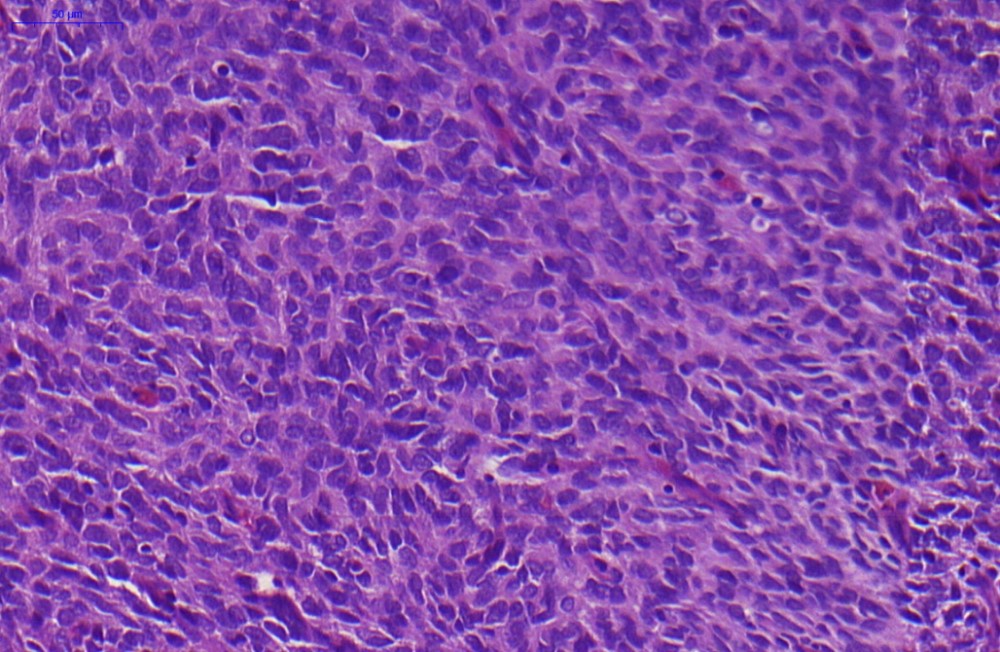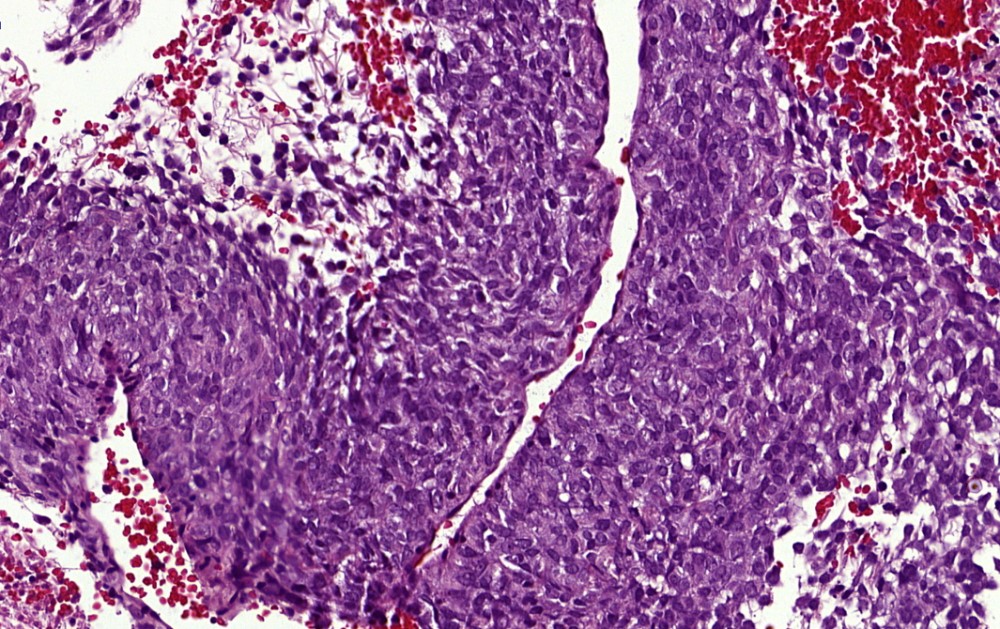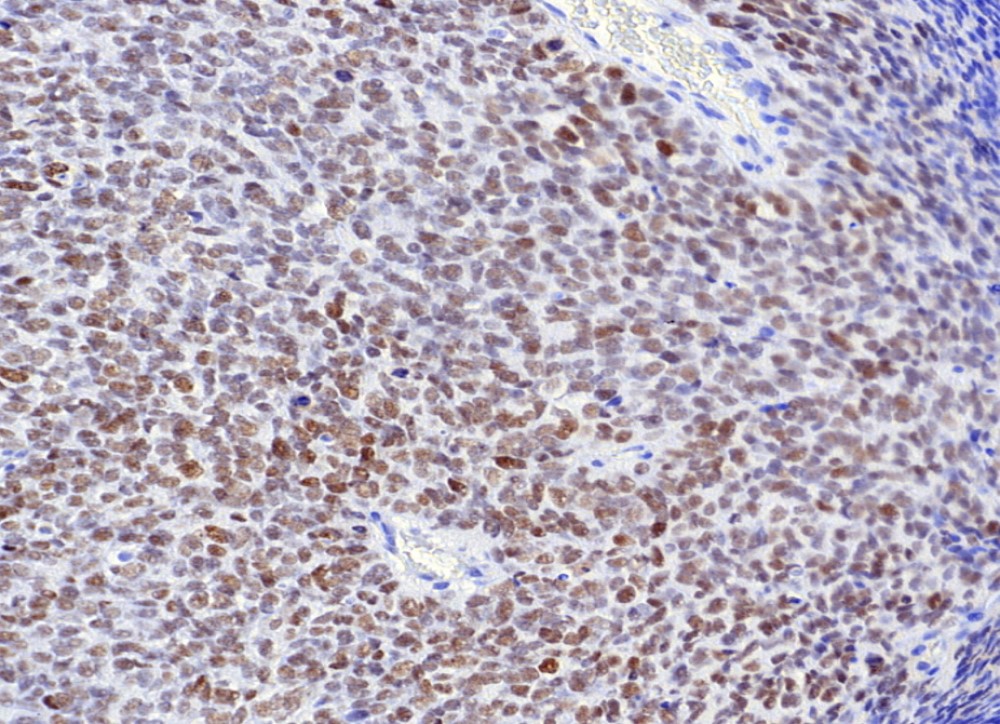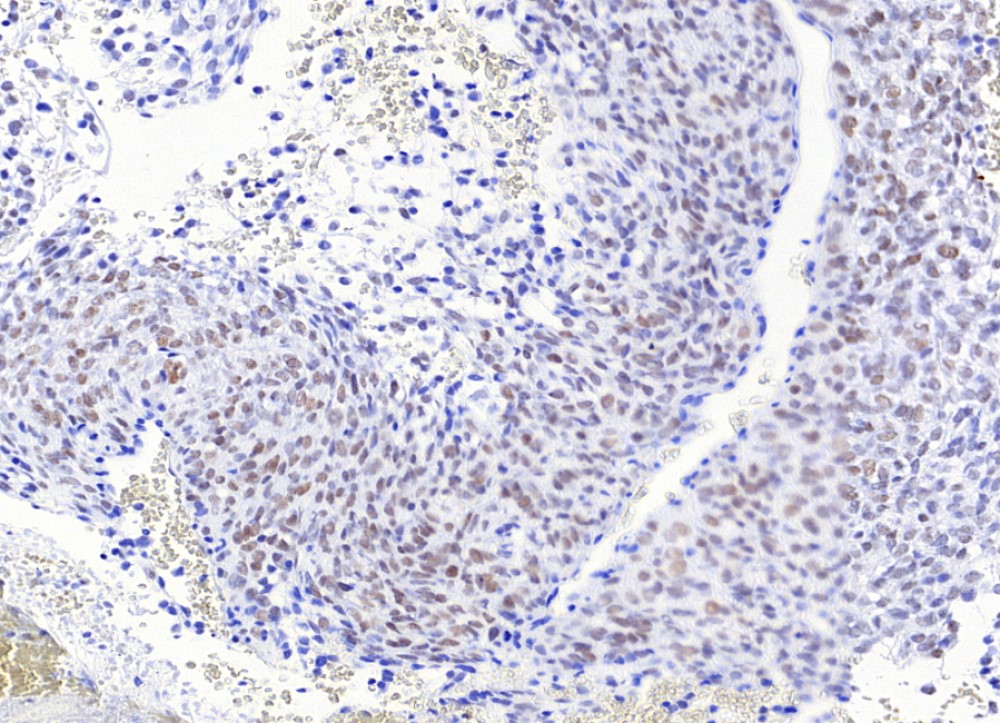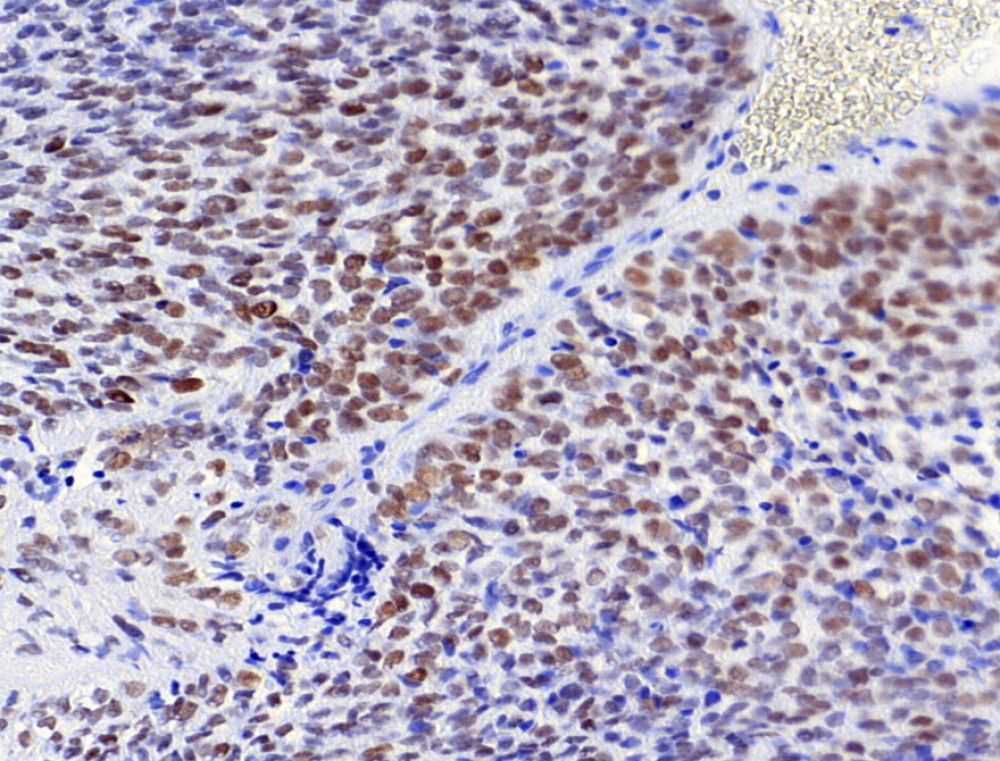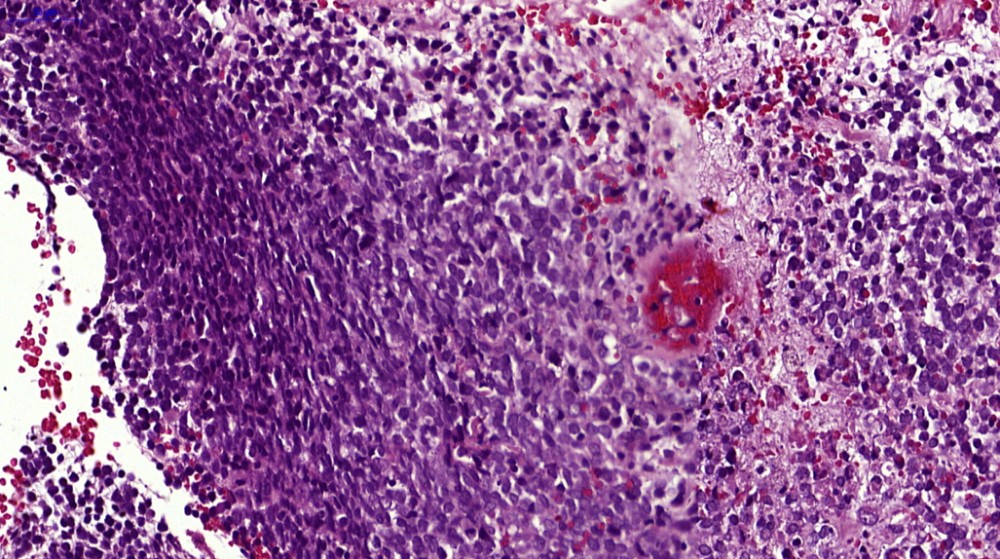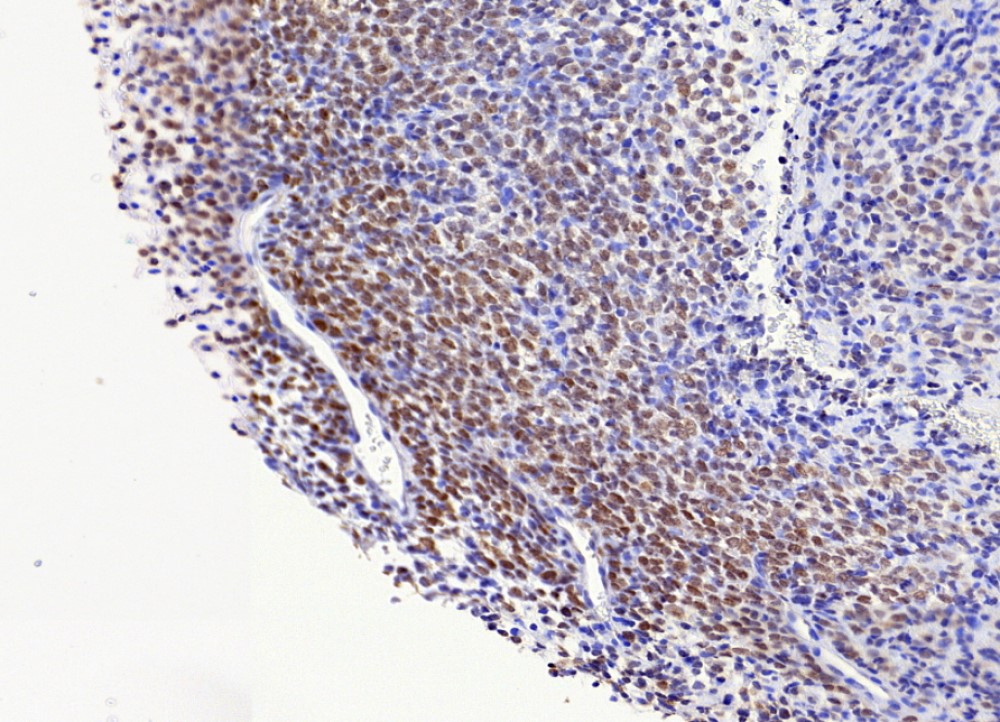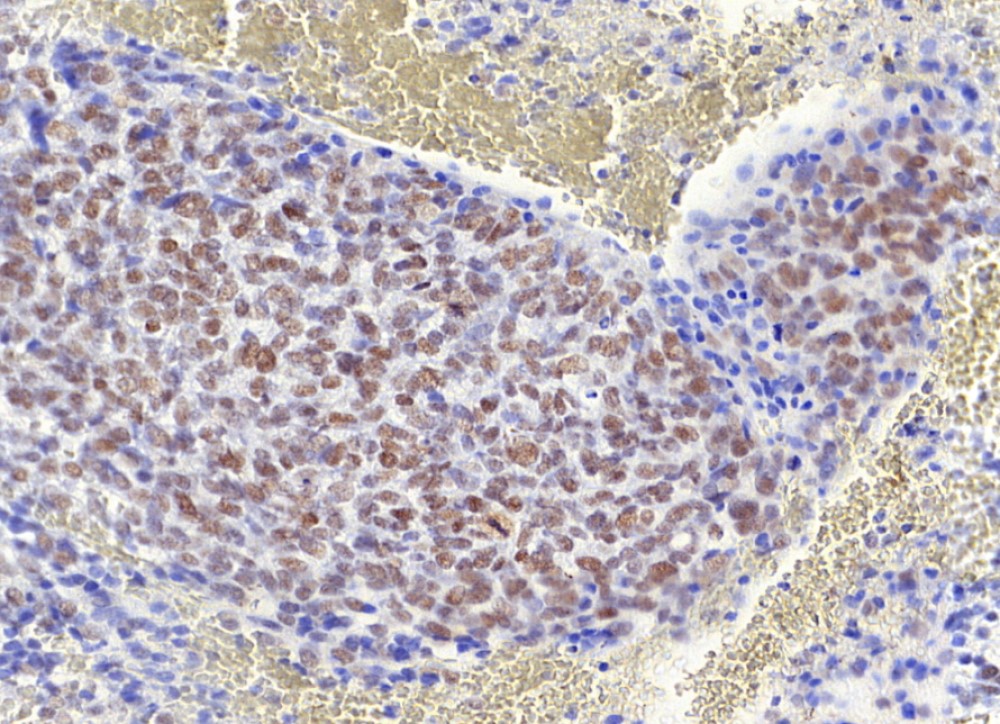Table of Contents
Definition / general | Essential features | Pathophysiology | Clinical features | Interpretation | Uses by pathologists | Microscopic (histologic) images | Positive staining - normal | Positive staining - disease | Negative staining | Board review style question #1 | Board review style answer #1Cite this page: Machado I, Llombart-Bosch A. BCOR. PathologyOutlines.com website. https://www.pathologyoutlines.com/topic/stainsbcor.html. Accessed March 31st, 2025.
Definition / general
- BCL6 transcriptional corepressor (BCOR) is located at Xp11.4 locus (Genes Dev 2000;14:1810, J Clin Pathol 2020;73:314)
- Encodes a protein which is involved in transcriptional repression in association with BCL6 and epigenetic silencing through polycomb repressive complex 1 (PRC1) (Epigenomics 2019;11:835)
Essential features
- BCOR immunohistochemistry can be used diagnostically to separate tumors with BCOR gene alteration (rearrangement or internal tandem duplication) from their histological mimics (mainly the group of small / ovoid round cell sarcomas) (Pediatr Blood Cancer 2014;61:2191, Histopathology 2020;76:509)
Pathophysiology
- BCOR is a corepressor when bound to BCL6 (Genes Dev 2000;14:1810)
- BCOR forms part of the polycomb repressive complex 1 which ubiquitinates H2AK119 causing epigenetic silencing (Biochem Soc Trans 2017;45:193)
- Involved in early embryonic development and the differentiation of embryonic stem cells into ectoderm, mesoderm and hematopoietic lineages (PLoS One 2008;3:e2814)
- BCOR-CCNB3 fusion results from an X chromosomal paracentric inversion linking the BCOR sequence to exon 5 of CCNB3 (Histopathology 2018;72:320)
Clinical features
- Associated with cancer of several locations and oculofaciocardiodental syndrome (Nat Genet 2004;36:411)
- Soft tissue / bone, kidney, uterus and brain are the most common tumor locations (Am J Surg Pathol 2018;42:1128, Histopathology 2018;72:320, Pediatr Blood Cancer 2014;61:2191, Am J Surg Pathol 2016;40:1670, Am J Surg Pathol 2017;41:1713, Nat Genet 2012;44:461, Histopathology 2020;76:509, Am J Surg Pathol 2008;32:1228, Am J Surg Pathol 2018;42:335, Histopathology 2020;76:64, Expert Rev Mol Diagn 2020;20:293)
- BCOR rearranged sarcomas show a striking male predominance and mainly occur in children / adolescents, although the uterine form can occur in the adult population (Pediatr Blood Cancer 2014;61:2191, Mod Pathol 2017;30:1251)
Interpretation
- Distinct diffuse nuclear staining (Am J Surg Pathol 2016;40:1670, Am J Surg Pathol 2016;40:1009, Histopathology 2020;76:509)
Uses by pathologists
- Specific marker for BCOR associated tumors
- Cannot distinguish BCOR rearranged sarcomas from other round cell sarcomas with BCOR overexpression (Am J Surg Pathol 2016;40:1670, Am J Surg Pathol 2016;40:1009, Histopathology 2020;76:509)
Microscopic (histologic) images
Positive staining - normal
- Spermatogonia (Am J Surg Pathol 2016;40:1670)
Positive staining - disease
- Undifferentiated small round cell sarcomas with BCOR rearrangements in bone, soft tissue, abdominal / pelvic and visceral location:
- BCOR-CCNB3 gene fusion (Am J Surg Pathol 2018;42:604), (Histopathology 2020;76:509)
- BCOR-MAML3 gene fusion (Am J Surg Pathol 2016;40:1670)
- ZC3H7B-BCOR gene fusion (chest wall) (Histopathology 2020;76:509)
- BCOR-KMT2D gene fusion (Am J Surg Pathol 2018;42:604)
- BCOR internal tandem duplication (Am J Surg Pathol 2016;40:1670, Am J Surg Pathol 2018;42:1128, Histopathology 2018;72:320, Nat Commun 2015;6:8891)
Negative staining
- Desmoplastic small round cell tumor (Am J Surg Pathol 2016;40:1670)
- Myxofibrosarcoma (Am J Surg Pathol 2016;40:1670)
- Ossifying fibromyxoid tumor (Am J Surg Pathol 2016;40:1670, Genes Chromosomes Cancer 2014;53:183)
- Angiosarcoma (Am J Surg Pathol 2016;40:1670)
- Chondrosarcoma (Am J Surg Pathol 2016;40:1670)
- Low grade fibromyxoid sarcoma (Am J Surg Pathol 2016;40:1670)
Board review style question #1
Board review style answer #1



